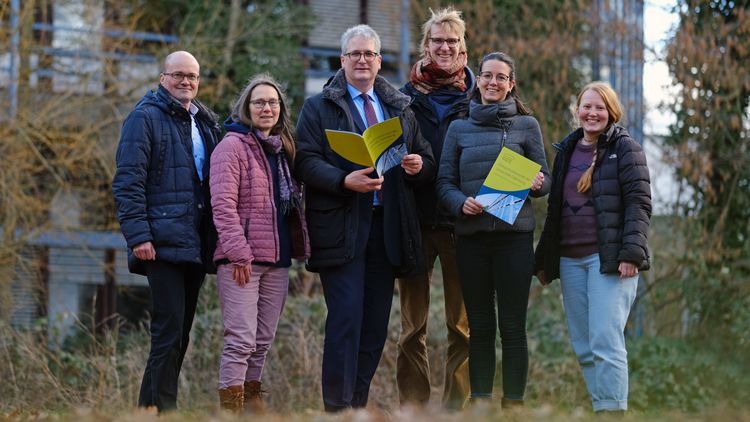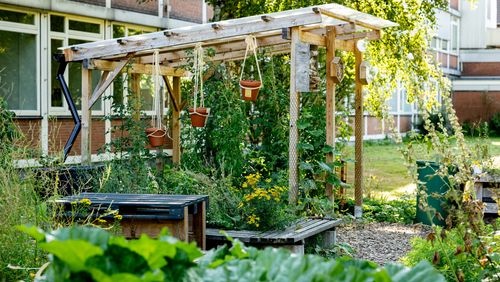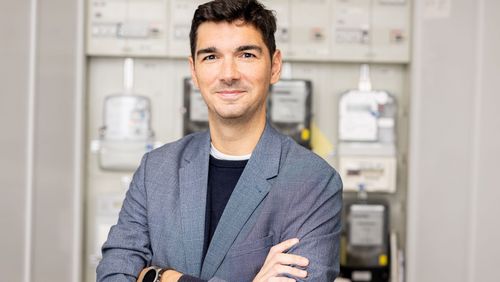The university aims to be climate neutral by 2030. An integrated climate protection concept provides the framework for this ambitious plan.
An important step on the path to climate neutrality: for the first time, the University of Oldenburg has presented an integrated climate protection concept, following the adoption of the corresponding resolutions by the Senate and Presidential Board. The 130-page paper lays the foundations for the university's declared goal of becoming climate neutral by 2030. With the collaboration of numerous university members, over the last 18 months a working group led by the university's Climate Protection Manager Anna Krämer compiled a comprehensive greenhouse gas balance sheet, developed emissions forecasts and created a catalogue of concrete climate protection measures as well as a strategy for regular emissions monitoring. The project behind the concept was funded by the Federal Ministry of Economic Affairs and Climate Action (BMWK).
"Protecting the climate is a long-term task for society as a whole, in which we as a university are actively involved, especially since the environment and sustainability are central themes at our university," stressed Jörg Stahlmann, Vice President for Administration and Finance. This applies equally for the entire university including the areas of research, study, teaching, administration and university management, he added. "What we have set out to achieve is a huge challenge. With the Climate Protection Concept we have now created a good basis for moving forward together on this path year after year," said Stahlmann.
With its ambitious goal of zero net greenhouse gas emissions by 2030, the University is going a step further than the current legal requirements. The state of Lower Saxony is aiming for climate neutrality by 2045, while the city of Oldenburg has set 2035 as its target.
Reducing emissions from 21,000 tonnes to 300 tonnes
The university commissioned an engineering office to analyse the impact of different political frameworks on greenhouse gas emissions and develop corresponding scenarios. According to the analysis, the university's greenhouse gas emissions could potentially be reduced from around 21,000 tonnes (as of 2019) to around 300 tonnes in 2030 if by that time the energy it consumes comes entirely from renewable sources. The remaining emissions would have to be offset by other measures to achieve complete climate neutrality.
The climate protection concept lists a total of 55 measures and 91 submeasures that can help the university to consume less energy and reduce its greenhouse gas output. The fields of action are Energy and Construction, Everyday Mobility, International Mobility, Resources, and Research, Study and Teaching, among others. The measures include feasibility studies on increasing the use of renewables, the expansion of bicycle infrastructure, initiatives to promote local public transport and a ban on short-haul flights for business trips.
"The area with the biggest potential for energy saving at present is building energy," Climate Protection Manager Krämer explained. In this area, the building management team is already implementing various measures with the existing budget as well as in the context of "Intracting measures" (internal performance contracting measures), including the replacement of old window panes with new ones, the replacement of fluorescent tubes with LED lamps and the installation of new photovoltaic systems. Other climate-friendly measures which are already underway are the conversion of the university's vehicle fleet to electric vehicles, the expansion of its bicycle parking spaces and the ecological redesign of its green spaces. Krämer stresses, however, that in addition to renovation measures and the use of energy-efficient technologies it is also imperative to ensure that the university can power its entire facilities using 100 percent renewable energies in the future. In a follow-up project, a feasibility study will examine whether it would be possible to heat the buildings at the university's various sites using heat pump technology. In addition, the university plans to campaign for more stringent criteria for green electricity at the state level.
Technical measures are not enough
The climate protection concept also states that climate neutrality cannot be achieved through technical projects in the area of energy-saving alone. In the important field of action "Everyday Mobility", for example, the interaction between university members, the city, the region and local public transport plays a key role. An essential goal of the university is to ensure that the climate protection strategy becomes a permanent effort and to firmly anchor the strategy in its institutions. The Climate Protection Management team will therefore become a permanent body within the Presidential Board, where it will function as a central contact point and coordinate all activities related to climate protection. The existing working group will continue to guide the process.
During the project, Krämer has experienced a lot of interest and support from people in all parts of the university. "With this tailwind, we want to get started and noticeably change the course," she says. She counts on the involvement of as many university members as possible: "The path to climate neutrality remains a joint endeavour."




